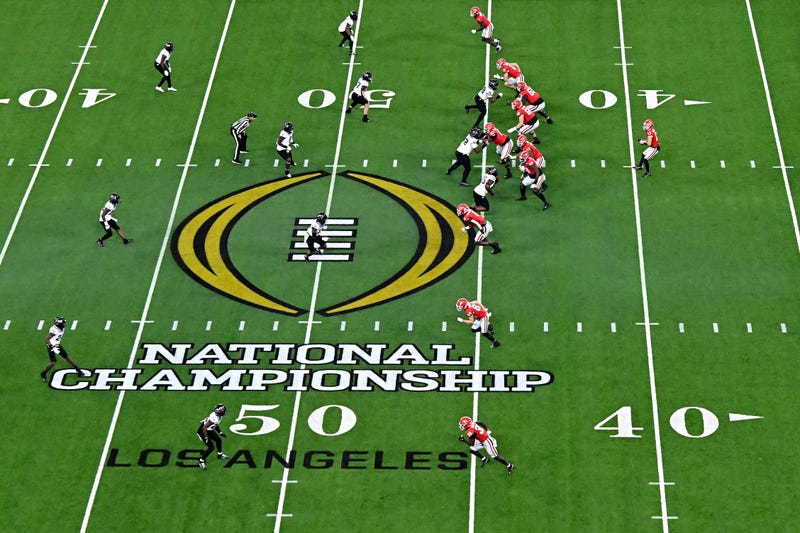
The idea of watching David battle Goliath in college football has led to upsets, but it's also created a huge competition mismatch that hasn't been beneficial. And while the past week of musical chairs -- which featured Colorado electing to leave the Pac-12 for the Big-12 -- has created speculation about what could happen next, it'd behoove the NCAA to ditch the idea of regional conferences and create leagues based on programs' win totals.
For years, it's been the same few schools dominating the top-25 rankings list that determines the sport's playoff picture. Down in the SEC, there's Alabama and Georgia. The Big Ten features Ohio State and Michigan. Clemson's owned the ACC. The west controlled by Oregon and USC in the Pac-12. And while the aforementioned schools are largely there because of dominance in recruiting, the cakewalk path to the top provided a boost. The Pac-12 has a tendency to cannibalize itself -- annually leaving them without a participant in the coveted College Football Playoff -- but other conferences have juggernauts that feast on the bottom-feeders.
Take the Big Ten and SEC as prime examples of this argument. Rutgers hasn't finished with a winning record in conference play since 2011, and they lost all Big Ten games in 2018 and 2019. Until last year, Vanderbilt hadn't won an SEC game since 2019. To powerhouses of the Big Ten and SEC East, Rutgers and Vanderbilt were circled on the calendars as easy wins. And when factoring in the cupcake non-conference schedules that many top programs face in the season's ramp-up period, the path to sustained success seems much easier.
This isn't to say that Georgia and Ohio State don't play high-level competition, but they're not exactly forced to go through a gauntlet to reach the promised land. And this reality leads to a highly subjective interpretation of each team's strength of schedule and quality of wins, when the CFP's rankings committee determines who's in and who's out of the tournament.
Similar to how the sport has allowed student-athletes to profit off their name, image, and likeness, it's time for a reshuffling of the deck that pairs programs based on record. And, if nothing else, it'd eliminate the rhetorical question of "What if?" when wondering how schools would fare against each other.

The naysayers will argue that tougher regular season schedules will make life impossible for top teams to accumulate wins, creating worse matchups come CFP time. Yeah, this might be a downside. But the possibility of better regular season competition seems too good to pass up. Plus, schools that come out on the other end of a tough schedule with a high win total will gain even more credibility. Just imagine the pedestal Georgia would be viewed on if they took down Alabama and Ohio State during the regular season.
College football's true bullies can beat anyone. That's the philosophy athletic directors and schedule-makers should foster when determining which teams should square off. Maybe the idea of more challenging schedules presents a daunting future for teams that've benefited from easier ones, but it shouldn't. It's also worth mentioning the relocation of UCLA and USC from the Pac-12 to the Big Ten further blurs the geographical lines from each conference, which means arguments banning redistricting have less merit.
While the logistics of pairing programs based on record could make the idea's practical implementation extremely difficult, it's a fun option to think about. If college football officials took all the teams that consistently win eight or more games from the Power Five, placed them in one super-conference, and then stuck the struggling programs in another league, that'd make for much better matchups. It'd also cut the number of conferences down from five to three.
The increase in variety that'd come as a result of shrinking the potential pool of programs within each conference would create appealing possibilities. All of the matchups would look strong on paper, and they'd feature much more evenly matched teams.
As conference realignment keeps forcing its way into conversations all across the game, perhaps it's time to consider a complete makeover for how various schools are grouped together. Maybe the college football universe is worried about evolving too quickly, based on impulse. But the notion at least warrants some consideration. After all, end zone dances are more fun than becoming a meme for dysfunction.
Jack Stern is a columnist, anchor, and associate producer for CBS Sports Radio. You can follow him on Twitter @J_Stern97.
